Physalis Peruviana: [Characteristics, Cultivation, Care and Disadvantages]

Important points when sowing a Physalis peruviana:
- When? The propagation and sowing of the physalis peruviana is carried out during the spring by means of seeds, although it can also be cultivated by cuttings and grafts of the plant.
- Where? Gardeners grow it in the garden to create beds and in pots to be used on terraces and balconies.
- How do we water? The optimal annual rainfall for the cultivation of physalis peruviana should range between 1000 and 2000 mm distributed throughout the year, with a relative humidity between 70% and 80%.
- How often do we water? Physalis peruviana needs abundant watering during the summer without letting the substrate dry out and moderately and less frequently during the rest of the year, waiting for the soil to be almost dry.
- What care does it require? Physalis peruviana grows in various environmental conditions and also in slightly acidic soils rich in organic matter.
- What pests and diseases affect you? Physalis peruviana can be attacked by pests such as flea mites and whiteflies.
What characteristics does physalis peruviana have?
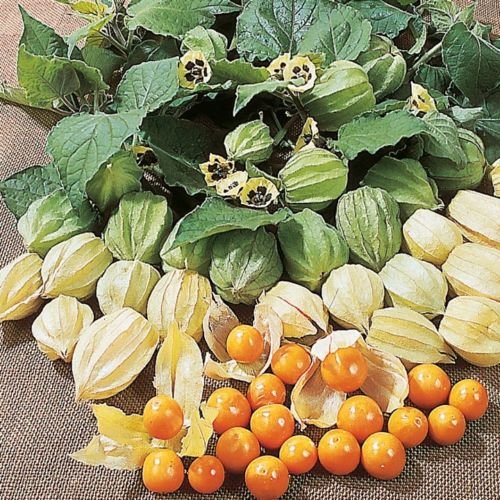 The plant with the scientific name physalis peruviana is native to the Peruvian highlands.
The plant with the scientific name physalis peruviana is native to the Peruvian highlands.
But there is also evidence that it comes from Brazil, from where it later went to Chile and also to Colombia.
Bushy and with a fibrous root, Physalis peruviana belongs to the Solanaceae family and to the Magnoliaceae species.
It receives the common names of cape gooseberry, sackbutche, tomatillo, yuyo, aguaymanto, Peruvian cherry, Peruvian tomato, topo topo and capulí, among others.
Physalis peruviana is a perennial plant, branched from the base, which can reach a height of 1 to 1.5 m., although it has an indeterminate growth. Its leaves are alternate, simple, petiolate, heart-shaped and pubescent with a length of 5 to 15 cm and a diameter of approximately 10 cm.
The flowers of physalis peruviana have a bell shape, grow in the axils of the leaves, are solitary, pedunculate and hermaphrodite. The main characteristic of the physalis peruviana is that it houses the fruit inside a basket, also known as a calyx.
The calyx of the fruit has a shelf life of about a month, and is responsible for protecting it from insects, birds, pathogens and external weather conditions. The fruit of Physalis peruviana is a berry with an approximate diameter of 2 cm and a weight between 4 and 5 g, orange – yellow in color with a smooth and shiny skin.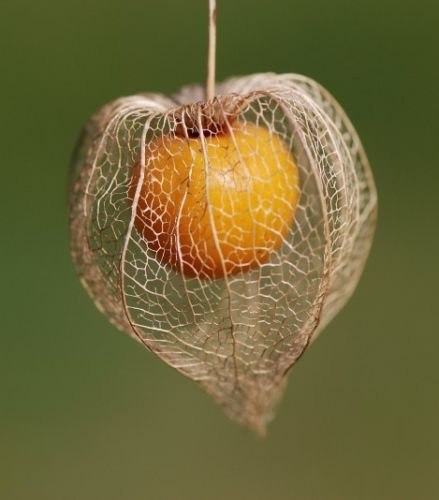
It has a bittersweet flavor and contains remarkable values of nutrients such as vitamin C, vitamin A, fiber, protein, potassium, phosphorus, iron and zinc. The pulp of the fruit is juicy and contains a large number of small seeds inside.
There are more than 80 varieties of the genus Physalis, which are found in the wild. The Spanish introduced it to South Africa as an anti-scurvy fruit more than 200 years ago, initially at the Cape of Good Hope.
From there it spread to Kenya, Australia, Great Britain, Zimbabwe, New Zealand, Hawaii and India. It is currently cultivated in almost all the highlands of the tropics and in some of the subtropics between 1,500 and 3,000 meters above sea level.
Although the largest producers of physalis peruviana are Colombia and South Africa. Medicinal properties such as antioxidant, anti-inflammatory, anti-hepatotoxic and for the treatment of diabetes and as an immunosuppressant are attributed to the plant.
When to sow the peruviana physalis?
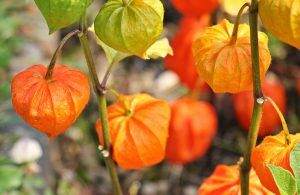 The propagation and sowing of the physalis peruviana is carried out during the spring by means of seeds. Although it can also be grown by cuttings and grafts of the plant.
The propagation and sowing of the physalis peruviana is carried out during the spring by means of seeds. Although it can also be grown by cuttings and grafts of the plant.
The seeds are generally obtained from ripe or fermented fruits and come from a healthy and vigorous plant.
Where to plant the physalis peruviana?
Physalis peruviana is a fast-growing plant, so it can be planted anywhere, although it requires support for its development and growth.
Gardeners grow it in the garden to create beds and in pots to be used on terraces and balconies.
How do we water the physalis peruviana?
The optimal annual rainfall for its cultivation should range between 1000 and 2000 mm distributed throughout the year, with a relative humidity between 70% and 80%. Water supply during dry periods is important to prevent fruit breakage.
How often do we water the Peruvian physalis?
Physalis peruviana needs abundant watering during the summer without letting the substrate dry out and moderately and less frequently during the rest of the year, waiting for the soil to be almost dry.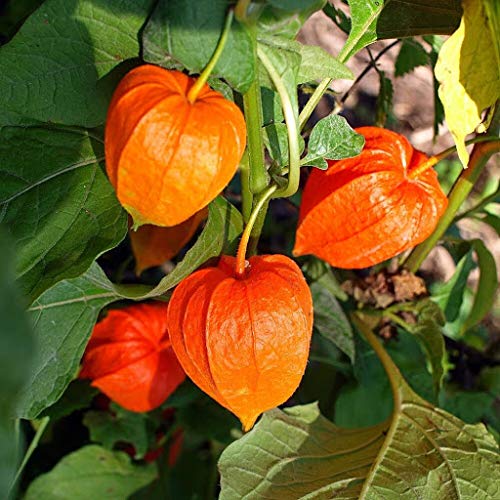
How to plant a Peruvian physalis step by step?
The crop is propagated by seeds that come from fully ripe, good sized fruits harvested from healthy and vigorous plants.
- Extract the seeds and place them in a plastic container in which they undergo a fermentation process for 24 to 72 hours.
- Wash the seeds with clean water and place them in the shade on absorbent paper.
- Store the seeds for 8 days and then sow them in a seedbed.
- The seedbed must contain universal, light and fresh substrate.
- Water with plenty of water.
- After 25 – 30 days the seedlings are transferred to bags for a month.
- Transplant when the plant reaches a height of 15 to 20 cm and has 3 to 4 leaves.
- Make holes of 30 x 30 cm, and at the bottom place 2 kg of organic fertilizer plus 80 grams of fertilizer in a 10-30-10 ratio.
- Sow at a distance of 2.0 x 2.0 m in squares for a population of 2,500 plants/ha.
- For a better management of the crop and to achieve the production of higher quality fruits, the tutoring of the plants is recommended.
What care does the physalis peruviana need?
- Physalis peruviana grows in various environmental conditions and also in slightly acidic soils rich in organic matter.
- The preferred soils for the cultivation of physalis peruviana are those with a sandy-clay texture with good drainage and a pH between 5.5 and 6.8.
- It requires rainfall between 1,000 and 2,000 mm, with a wide range of height up to 3,000 meters above sea level, and an optimal temperature between 13º C and 18º C.
- Physalis peruviana is susceptible to extreme temperatures; very high harm flowering and fruiting, and very low; below 10ºC constantly, prevent it from prospering.
- Temperature and light play a very important role in physalis peruviana and affect its size, color, nutritional content, flavor and fruit ripening time.
- A persistent rain also affects the conditions and development of the plant.
- Training pruning of physalis peruviana is recommended because it has an effect on the size of the fruit, contributes to improving the structure of the plant and supports the effectiveness of the trellis system.
What pests and diseases affect physalis peruviana?
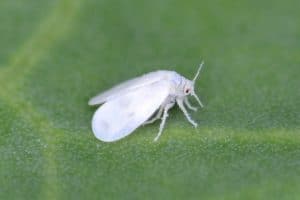 Physalis peruviana can be attacked by pests such as flea mites and whiteflies.
Physalis peruviana can be attacked by pests such as flea mites and whiteflies.
The so-called flea beetle (Epitrix sp.) is a small beetle of the Chrysomelidae family, barely 2 mm long, that makes holes or perforations in the leaf blades.
The whitefly (Trialeurodes vaporariorum) lays its eggs on the underside of the leaf, and both young and adults suck the sap of the physalis peruviana, being able to transmit some virus. Among the diseases of physalis peruviana are Alternaria sp., which affects the older leaves.
It appears as small black spots that come together until the leaf is completely necrotic. It is recommended to harvest and destroy the fruits affected by diseases and pests in abundance.
Physalis peruviana maintains control of weeds by itself, which helps the healthy development of the plant.
Bibliographic references
- Physico-chemical characterization of cape gooseberry (Physalis peruviana) in the region of Silvia Cauca, JH Mendoza, A Rodriguez – Biotechnology in the sector…, 2012 – revista.unicauca.edu.co
- Quality and maturity of cape gooseberry (Physalis peruviana L.) in relation to fruit coloration, G Fischer, O Martinez – Colombian Agronomy, 1999 – revista.unal.edu.co
- Propagation of cape gooseberry (Physalis peruviana L.) using different types of cuttings and substrates, FJL Acosta, NRG Tenjo, G Fischer … – … National Faculty of …, 2008 – redalyc.org
- Agrophenology of Physalis peruviana L. in greenhouse and fertigation, R Mora-Aguilar, A Peña-Lomelí … – Revista Chapingo Serie…, 2006 – redalyc.org
- Postharvest behavior of cape gooseberry (Physalis peruviana L.) under active modified atmosphere conditions, O Lanchero, G Velandia, G Fischer … – Ciencia &…, 2007 – revista.corpoica.org.co

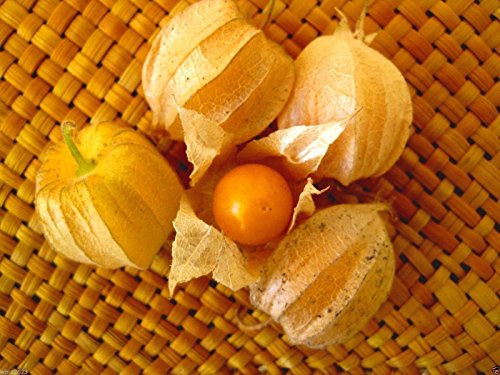
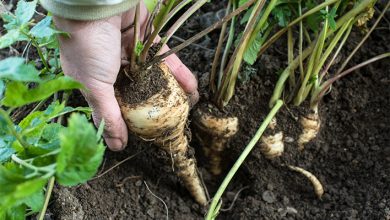
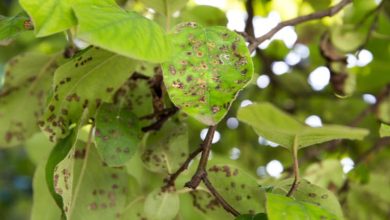
![Photo of Fenugreek: [Utility, Intake, Contraindications and Active Principles]](https://www.complete-gardening.com/wp-content/uploads/2022/08/fenugreek-utility-intake-contraindications-and-active-principles-390x220.jpg)
